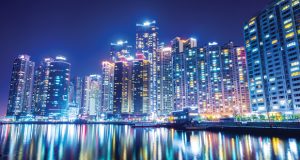SOLUTIONS TO ADDRESS LIGHT DEFICIENCY
To mitigate the negative effects of insufficient light exposure, several solutions can be implemented. One of the most effective ways to increase natural light exposure is to spend more time outdoors. Even short breaks outside during the day can help to boost mood and improve sleep quality. On a personal note, I have changed my daily routine to go out for a walk after lunch every day. This way I make sure I get some natural daylight, especially in winter, with the added benefit that I get some movement through exercise, and this in turn helps to reduce my blood glucose levels after having eaten my lunch.
We have become known as the indoor generation, and for those who spend most of their time indoors, incorporating more natural light into indoor environments is crucial. Furthermore, advancements in lighting technology have led to the development of circadian lighting systems. These systems are designed to mimic the natural progression of sunlight throughout the day, providing bright, blue-enriched light in the morning and warmer, dimmer light in the evening. Research has shown that circadian lighting can help to regulate sleep patterns and improve overall health. Reducing the blue-enriched light in the late afternoon is important to avoid circadian disruption.
One aspect that is missing from our indoor spaces is the longer wavelengths of light, the reds and the near infrareds. These have been removed from the today’s artificial light sources as they were deemed as being inefficient by producing more ‘heat’ than light. LEDs are incredibly efficient at delivering visible light; however, our physiology needs much more than just the visible spectrum. Alongside this, modern glazing is coated to reduce solar heat gain coming into the building and these coatings reduce the heat gain by cutting out the longer wavelengths of light. Today’s built environment has significantly reduced our exposure to Near Infrared Light to meet the sustainability agenda and while planetary sustainability is a vitally important subject area, what about human sustainability?
The solution is relatively simple, this is not a technological challenge, this is a legislative challenge. I hypothesise and suspect that we are saving money through energy efficiency at the front end yet what is the cost to health services such as the NHS at the back end? It may cost a little more in energy to bring back parts of the invisible spectrum, but how much might we save in the longer term through better health and productivity?
CONCLUSION
We are not about to rewind the advances we have made since the first industrial revolution, so we should consider how we give access to the right kind of light to enhance human health and wellbeing. Natural light plays a critical role in our overall wellbeing, however most of us do not get enough exposure to natural light, leading to a range of health issues. By spending more time outdoors, incorporating unprocessed natural light into indoor environments, whilst re-introducing some of the longer wavelengths of light we can address the shortfall and develop salutogenic strategies using light as one of the components to deliver better health and wellbeing outcomes for the occupants of the built environment.






